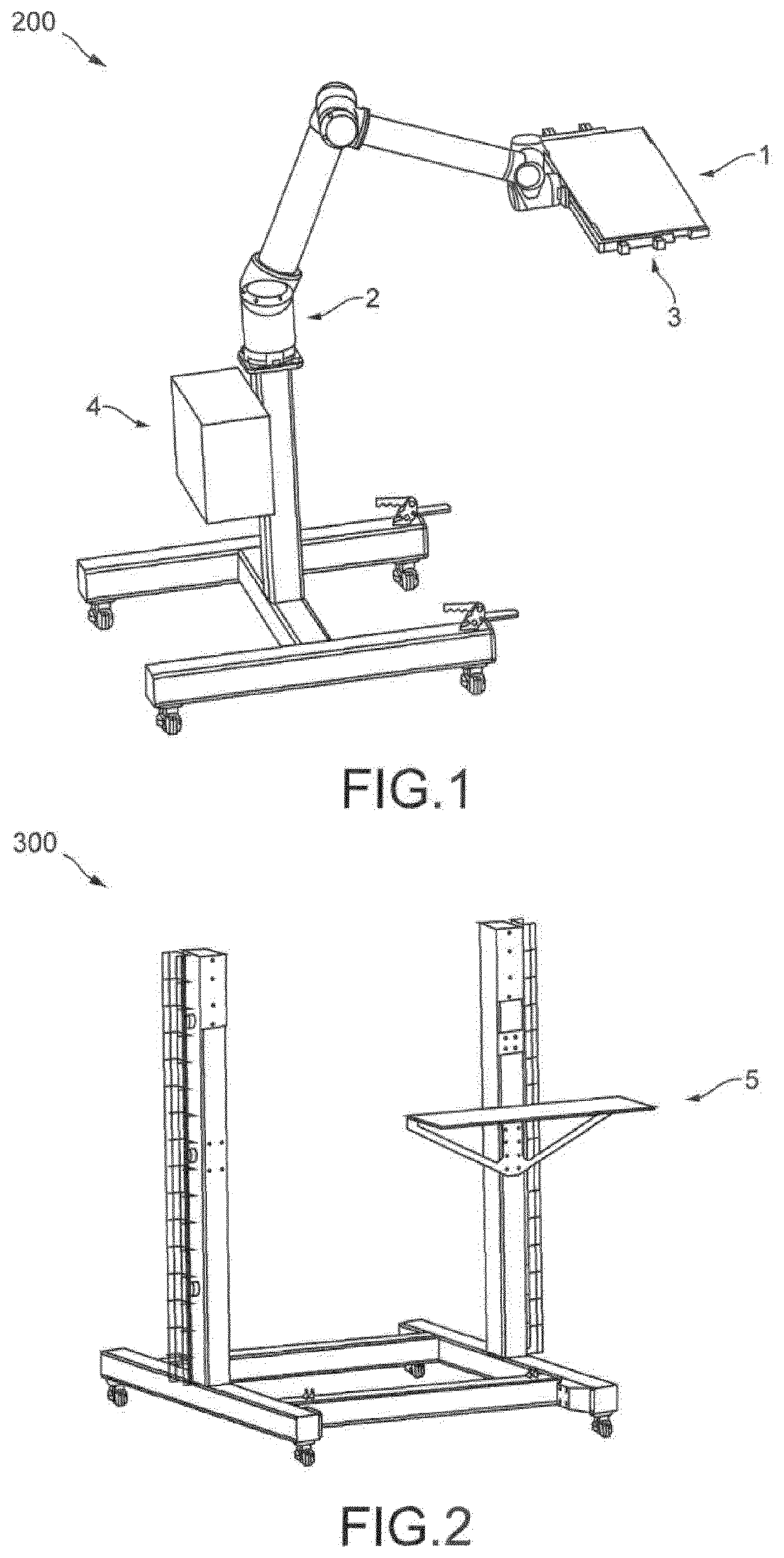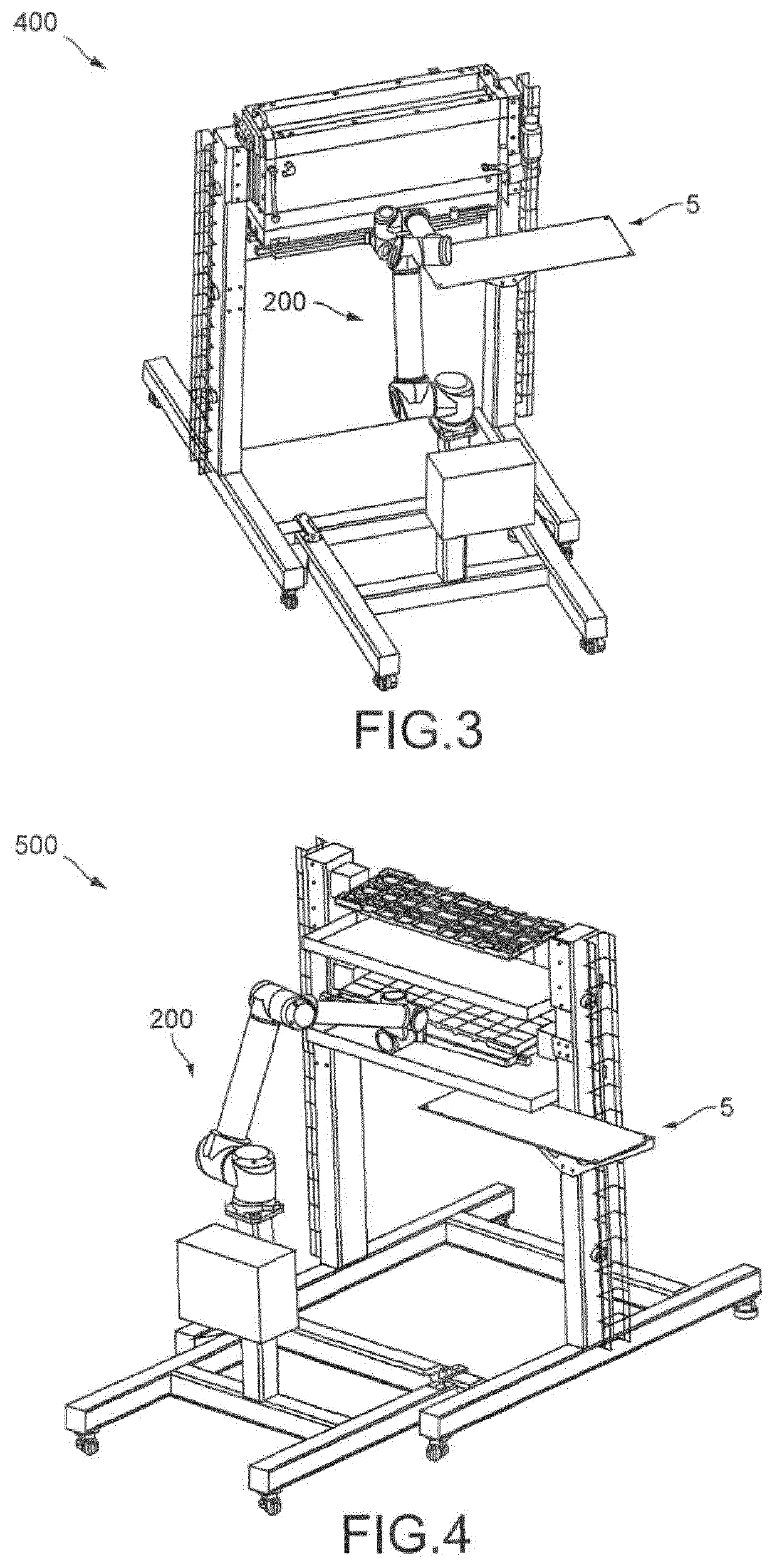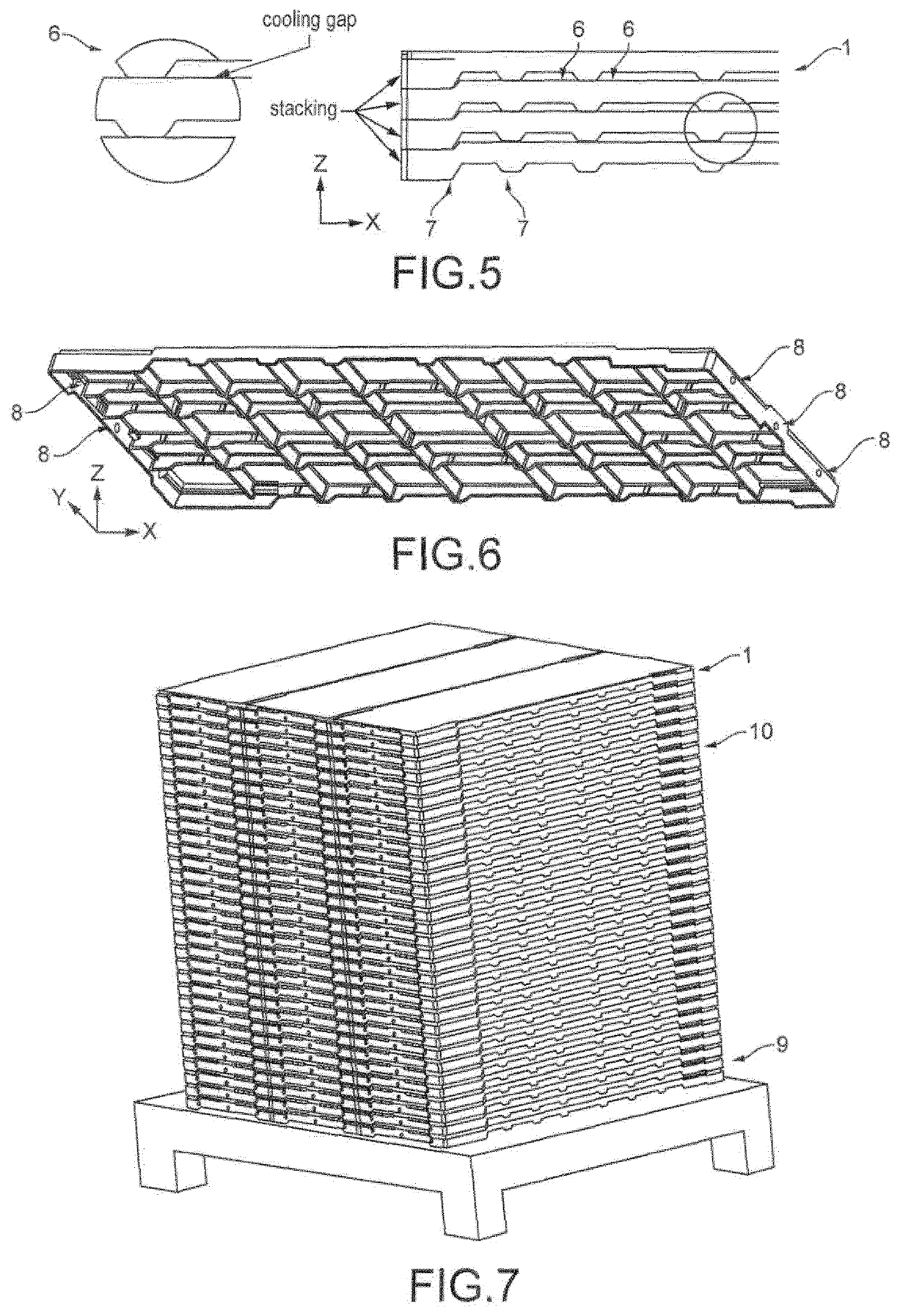Modular production line and process for using it
- Summary
- Abstract
- Description
- Claims
- Application Information
AI Technical Summary
Benefits of technology
Problems solved by technology
Method used
Image
Examples
example 1
[0248]In order to test the impact of the cooling process of the present invention on the final chocolate product, the following trials were carried out.
[0249]The chocolate that was chosen for the following investigations was the Dessert Noir Natural Mass from La Panilla with a minimum of 52% Cocoa, made from 42.2% Cocoa paste, 11.5% Cocoa butter, 46.2% sugar, 0.3% sunflower lecithin and without milkfat. The chocolate mass showed a particle size of 21 μm, measured on a Malvern mastersizer.
[0250]The moulding of the samples was done manually into moulds, pre-warmed to 30° C. Firstly, six cavities of the 42 g KitKat Chunky mould were filled with an amount of chocolate in order to cover the base of the mould. Subsequently, pre-counted hazelnut nut portions of 13 whole nuts per cavity were deposited manually from a plastic pot for each cavity. The nuts were gently pressed into the chocolate to avoid movement of the nuts to one side of the cavity during the evening off of the bars. Afterwa...
example 2
[0255]Milk Chocolate was tempered in a Sollich Minitemper Turbo, to a temper index of between 4 and 6 (aiming for 5), with a crystallization temperature between 22.0 and 22.4 C (measured after depositor). 40 kg of chocolate was pumped and purged into a depositor via heated pipework and the depositor jacket set to 30° C. but later raised to 31° C. to ensure adequate flow of chocolate to opposite end of depositor from inlet. Moulds were conditioned to 30° C.
[0256]The moulds have dimensions 1122×283×30 mm, with a useable cavity area of 1070×270 mm placed centrally. The trapezoid cavities are internally 26.6×16.5 mm and 9.8 depth. The cavities are separated by 2 mm in the x direction and 10.4 mm in they direction. The moulds are made from polycarbonate.
[0257]The moulds have the profile view as shown in FIG. 5 and contain 7 apertures of trapezium cross-section (x, z axes) through the y axis. The internal protrusions have depth from the base of the mould of 7 mm and the external protrusio...
example 3
[0266]The process of Example 2 was repeated with the following exceptions.
[0267]The chocolate was tempered in a Sollich Turbo Temper Champ and the depositor jacket was set to 32° C.
[0268]10 moulds were filled with solids in two rounds, placed centrally in the stack closest and furthest from the ventilator 10 moulds were filled with chocolate and placed centrally in section C of the pallet, furthest from the ventilator. 10 moulds were filled with chocolate and placed centrally in section A of the pallet, closest to the ventilator.
[0269]The moulds with the temperature probes were demoulded starting at 20 min residence times, in increments of 5 min up to 45 min total cooling time, with the mould filled last demoulded first, i.e. the one on top. For Stack C, there were 4 stickers after 20 min, and none thereafter.
[0270]For Stack A there were 6 stickers after 20 min, and 3 after 25 min, and none thereafter.
PUM
 Login to View More
Login to View More Abstract
Description
Claims
Application Information
 Login to View More
Login to View More - R&D
- Intellectual Property
- Life Sciences
- Materials
- Tech Scout
- Unparalleled Data Quality
- Higher Quality Content
- 60% Fewer Hallucinations
Browse by: Latest US Patents, China's latest patents, Technical Efficacy Thesaurus, Application Domain, Technology Topic, Popular Technical Reports.
© 2025 PatSnap. All rights reserved.Legal|Privacy policy|Modern Slavery Act Transparency Statement|Sitemap|About US| Contact US: help@patsnap.com



